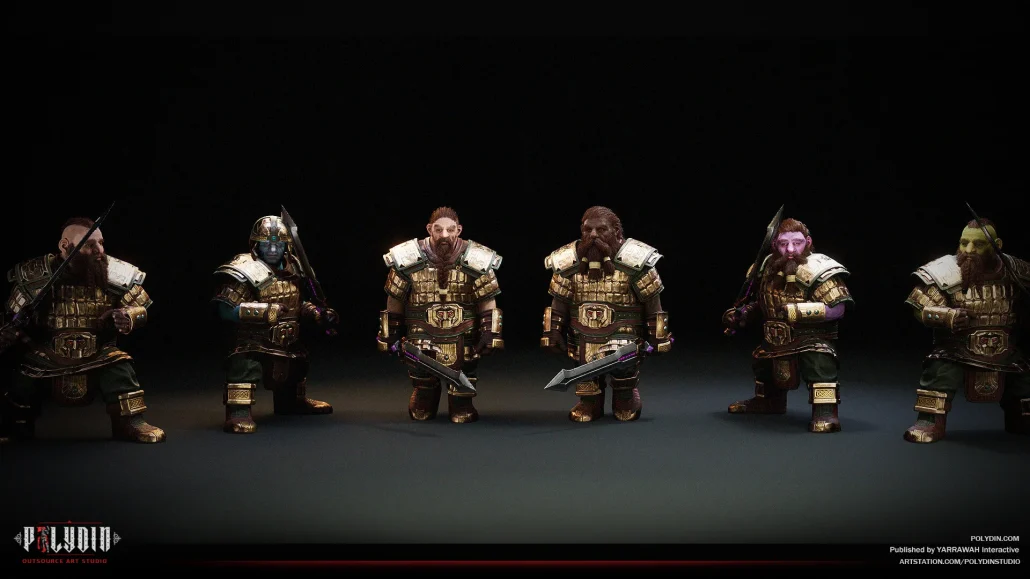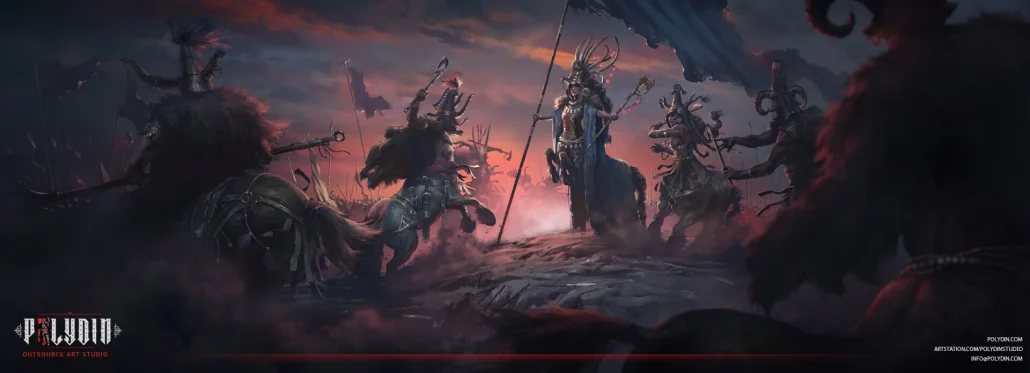In the dynamic world of video games, where visual splendor and interactive gameplay often take center stage, the role of music in video games stands as a powerful, yet sometimes understated, force. This exploration delves into the captivating realm of music in video games, shedding light on its profound importance and evolution. Beyond mere auditory embellishments, music in video games plays a crucial role in shaping narratives, enhancing immersion, and eliciting emotional responses from players. From the early chiptune melodies of classic games to the orchestral masterpieces of modern titles, the journey of video game music reflects technological advancements, creative innovation, and a commitment to delivering unforgettable gaming experiences. Join us on this symphonic journey through the pixels, where we unravel the rich tapestry of video game music, explore its technological nuances, celebrate award-winning soundtracks, and contemplate the challenges and future trends that lie ahead in this dynamic and ever-evolving landscape.
Importance of Music in Video Games
Music in video games transcends its role as mere background ambiance; it is a dynamic and integral component that significantly contributes to the overall gaming experience. Its importance can be dissected across several crucial dimensions:
- Emotional Resonance:
- Music serves as a conduit for emotional engagement, amplifying the player’s connection to the game world. Whether it’s the triumph of victory, the tension of a climactic moment, or the poignancy of a character’s story arc, music adds emotional depth, making these moments more resonant and memorable.
- Atmospheric Enhancements:
- The right musical score has the power to shape the atmosphere of the game. From the haunting melodies of horror games that induce fear to the uplifting tunes of exploration games that evoke a sense of wonder, music sets the tone, creating a more immersive and captivating environment.
- Narrative Punctuation:
- Music acts as a narrative punctuation, emphasizing key story beats and enhancing the impact of crucial plot developments. It complements the narrative arc, guiding players through the highs and lows of the story and often signaling important shifts in the gameplay or overarching storyline.
- Player Engagement and Immersion:
- Music is a potent tool for maintaining player engagement and immersion. Well-composed and contextually relevant music helps players stay connected to the game world, heightening the sense of presence and involvement in the virtual environment.
- Identity and Branding:
- Iconic musical themes can become synonymous with specific games or franchises, contributing to their identity and branding. The recognition of these musical motifs not only enhances marketing efforts but also fosters a sense of familiarity and nostalgia among players.
- Gameplay Dynamics:
- Music can influence gameplay dynamics by providing cues or signals. For example, a change in music might alert players to an approaching enemy, signaling a shift in the intensity of the gameplay. This interaction between music and gameplay enhances the overall player experience.
- Artistic Expression and Creativity:
- Video game music is an art form in its own right, allowing composers to showcase their creativity and contribute to the artistic vision of the game. The interplay between visuals, gameplay, and music creates a holistic and multidimensional artistic expression.
In essence, the importance of music in video games goes beyond mere accompaniment; it is a transformative element that elevates the gaming experience, leaving a lasting imprint on players and contributing to the cultural significance of the medium.
Role of Music in Game Narratives
In the realm of video games, where storytelling extends beyond traditional mediums, music serves as a dynamic narrative tool, often wielding unparalleled influence over the player’s emotional journey. The strategic integration of music has the power to evoke specific moods, amplify tension, and punctuate pivotal moments within the game’s storyline. Whether it’s the swelling crescendo of an orchestral score during an epic boss battle or the subtle melancholy of a piano melody in a reflective narrative moment, video game music becomes an invisible storyteller, communicating nuances and enhancing the overall narrative impact. This subliminal yet potent alliance between music and game narratives underscores the significance of this auditory component in delivering a truly compelling and memorable gaming experience.


Video Game Music Technology
The evolution of video game music technology is a captivating journey that parallels the advancement of gaming itself. Technological innovations have continually elevated the art and impact of video game music, from the humble bleeps and bloops of early arcade games to the orchestral masterpieces of contemporary titles. Several key aspects contribute to the intricate tapestry of video game music technology:
- Chiptune Era:
- In the early days of gaming, limited hardware capabilities led to the creation of chiptune music. Composers skillfully worked within the constraints of 8-bit and 16-bit sound chips to craft memorable and iconic melodies, exemplifying creativity within technological limitations.
- MIDI (Musical Instrument Digital Interface):
- The advent of MIDI technology allowed for more sophisticated and dynamic compositions. MIDI enabled the control of various digital instruments, providing composers with a broader sonic palette and paving the way for richer, more complex musical arrangements.
- CD Audio and Red Book Audio:
- The transition to CD-based gaming platforms, such as the PlayStation and Sega CD, ushered in an era of high-quality audio. Red Book Audio allowed game developers to incorporate pre-recorded music tracks, bringing a level of audio fidelity and realism previously unattainable in the realm of video game music.
- Dynamic Music Systems:
- As games became more complex, dynamic music systems emerged to adapt to player actions and in-game events. These systems, such as adaptive or interactive music, ensure that the musical score evolves in response to the player’s choices, actions, or the unfolding narrative, enhancing immersion.
- Orchestral and Live Recordings:
- With the rise of powerful gaming consoles and PCs, orchestral arrangements and live recordings became more feasible. Games like “Final Fantasy” and “The Elder Scrolls” series showcase the use of full orchestras, enhancing the grandeur and emotional impact of the musical score.
- Synthesis and Sampling:
- Modern video game music often involves a combination of electronic synthesis and sampled instruments. This hybrid approach allows composers to achieve diverse sounds, blending traditional instruments with electronic elements to create unique and genre-defying soundscapes.
- Middleware and Game Engines:
- The integration of middleware and game engines has streamlined the process of implementing music into games. These tools provide developers and composers with efficient ways to integrate, trigger, and dynamically adapt music within the game environment.
- Virtual Reality (VR) Audio:
- As VR technology advances, so does the demand for immersive audio experiences. Video games in virtual reality utilize spatial audio technology to enhance the sense of presence, allowing players to perceive music and sound effects in three-dimensional space.
- User-Generated Content and Remix Culture:
- The digital era has given rise to user-generated content and remix culture. Games with modding capabilities allow players to create and share their musical creations, fostering a collaborative and participatory approach to video game music.
The evolution of video game music technology reflects advancements in audio engineering and the industry’s commitment to pushing artistic boundaries. As technology continues to progress, video game music remains at the forefront, delivering innovative and emotionally resonant soundtracks that enhance the overall gaming experience.
Modern Video Game Original Sound Tracks
Modern video game original soundtracks (OSTs) represent a diverse and sophisticated musical landscape. Characterized by cinematic quality, thematic continuity, and dynamic integration with gameplay, these OSTs go beyond traditional roles. Collaborations with renowned artists, official album releases on streaming platforms, and recognition through awards and live performances contribute to the cultural impact of video game music. Iconic themes and nostalgic resonance further solidify the significance of modern video game OSTs, creating a rich and enduring legacy in the gaming industry.
Awarded Video Games Sound Tracks
Several video game soundtracks have received critical acclaim and awards, solidifying their place as exceptional musical compositions within the gaming industry. Here are a few noteworthy examples:
- The Elder Scrolls V: Skyrim (Jeremy Soule):
- Known for its epic and atmospheric score, Skyrim’s soundtrack, composed by Jeremy Soule, received widespread acclaim and won several awards for its immersive and evocative music.
- The Legend of Zelda: Breath of the Wild (Manaka Kataoka):
- Manaka Kataoka’s score for Breath of the Wild, part of the renowned Legend of Zelda series, received critical praise and won awards for its innovative and dynamically adaptive musical design.
- Journey (Austin Wintory):
- Austin Wintory’s score for the game Journey is often hailed as a masterpiece. It was the first video game soundtrack to be nominated for a Grammy Award, emphasizing the increasing recognition of video game music in prestigious circles.
- NieR: Automata (Keiichi Okabe):
- Keiichi Okabe’s haunting and emotionally charged soundtrack for NieR: Automata received numerous awards for its unique blend of vocals, orchestral elements, and electronic sounds, contributing significantly to the game’s atmosphere.
- Red Dead Redemption 2 (Woody Jackson):
- Woody Jackson’s score for Red Dead Redemption 2, an expansive and immersive Western-themed soundtrack, received acclaim for its ability to capture the essence of the game’s narrative and open-world experience.
- Final Fantasy series (Nobuo Uematsu):
- Nobuo Uematsu’s contributions to the Final Fantasy series have consistently garnered praise and awards. His iconic melodies and orchestral arrangements have become synonymous with the franchise’s success.
- Hollow Knight (Christopher Larkin):
- Christopher Larkin’s score for Hollow Knight, an indie game with a rich and atmospheric world, received acclaim for its evocative compositions, enhancing the game’s sense of mystery and exploration.
These examples represent a fraction of the vast and diverse landscape of awarded video game soundtracks, showcasing the talent and creativity of composers who have made lasting contributions to the art of video game music.


Technology and Innovation in Video Game Music
Advancements in technology have revolutionized video game music, fostering innovative approaches that redefine the gaming auditory experience. Key developments include dynamic music systems for personalized immersion, high-fidelity audio enhancing realism, middleware and game engines streamlining integration, and interactive, adaptive music for a tailored soundtrack. Virtual Reality (VR) introduces spatial audio, while user-generated content and streaming platforms enhance accessibility. Cross-media integration, AI-generated music, and seamless collaboration between gaming and other media showcase the dynamic evolution of video game music within the digital era.
Challenges and Future Trends in Music in Video Games
Navigating the evolving landscape of video game music presents both challenges and exciting prospects for the future. Key considerations include:
Challenges:
- Budget Constraints: Composing intricate and high-quality music comes with production costs. Balancing the financial constraints of game development with the desire for a captivating soundtrack remains a challenge.
- Integration with Emerging Technologies: As new technologies like augmented reality (AR) and virtual reality (VR) emerge, integrating music seamlessly to enhance these experiences poses a challenge. Ensuring compatibility with evolving platforms requires adaptability.
- Maintaining Originality: The demand for unique and memorable soundtracks places pressure on composers to deliver originality. Striking a balance between innovation and maintaining familiarity can be challenging.
- Global Cultural Sensitivity: Video games cater to diverse global audiences. Composers must navigate cultural sensitivity to create soundtracks that resonate universally without inadvertently perpetuating stereotypes or cultural misunderstandings.
Future Trends:
Procedural Music Generation:
The rise of procedural music generation using AI algorithms allows for dynamically evolving soundtracks that adapt to player actions and preferences, offering a more personalized gaming experience.
- Interactive Virtual Concerts: The concept of interactive virtual concerts within video games, similar to events in Fortnite, presents an emerging trend. This innovative approach brings musicians and gamers together in shared virtual spaces.
- Spatial Audio Advancements: Ongoing advancements in spatial audio technology will continue to enhance the immersive quality of video game music, creating three-dimensional auditory experiences that respond dynamically to in-game environments.
- Cross-Disciplinary Collaborations: Increased collaboration between video game composers and artists from other disciplines, such as film, will result in cross-media projects that elevate gaming and music’s artistic and storytelling potential.
- Expanded Music Accessibility: With the growing popularity of game streaming and cloud gaming services, the accessibility of video game soundtracks will further expand. This trend opens up opportunities for composers to reach wider audiences and for players to engage with music outside the gaming context.
- Innovations in Game Design: Evolving game design paradigms, such as non-linear narratives and open-world exploration, will influence the demand for innovative music. Composers will need to adapt to these design trends to create soundtracks that complement evolving gameplay experiences.
- Integration of Cultural Influences: Future trends may involve a more intentional integration of diverse cultural influences in music in video games. Composers may explore a broader range of musical styles and instruments to create immersive and culturally rich soundscapes.
As video games continue to captivate a global audience, the challenges and future trends in music underscore the dynamic nature of this evolving art form, promising exciting possibilities and innovations on the horizon.
Conclusion
In conclusion, the realm of music in video games stands at the intersection of technological innovation, artistic expression, and immersive storytelling. Its importance in shaping emotional resonance, enhancing gameplay dynamics, and contributing to the cultural identity of games cannot be overstated. Challenges such as budget constraints and the integration of emerging technologies will need to be navigated as technology advances.
However, the future holds promising trends, including procedural music generation, interactive virtual concerts, and expanded accessibility. The evolving landscape of video game music reflects the transformative impact of technology, the creative prowess of composers, and the profound connection between music and the gaming experience. As the symphony of gaming continues to unfold, music in video games remains a dynamic and integral part of this ever-expanding interactive art form.


